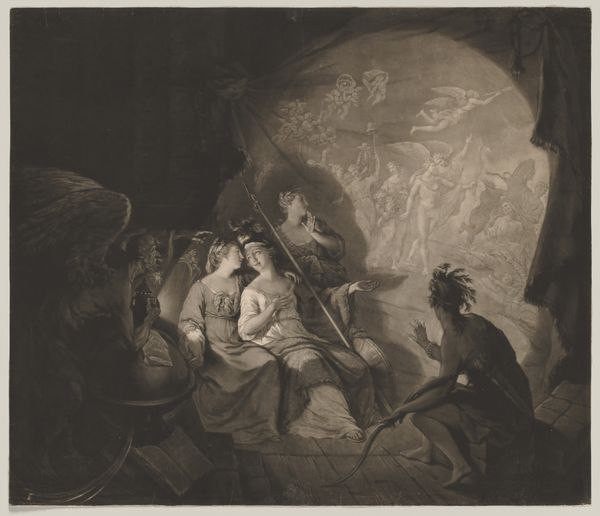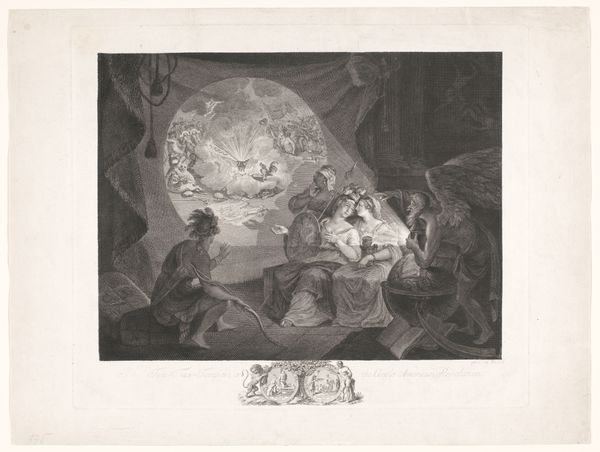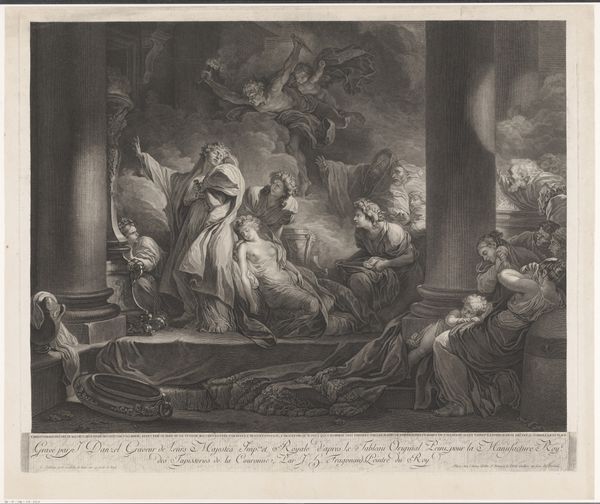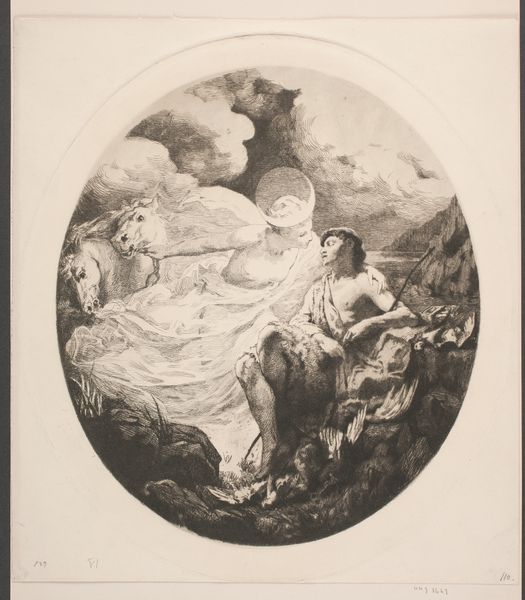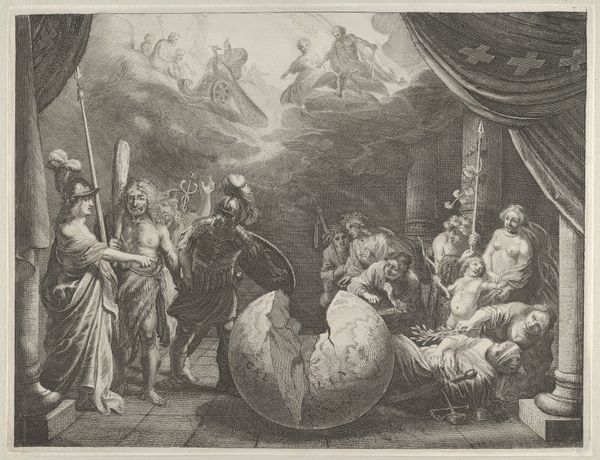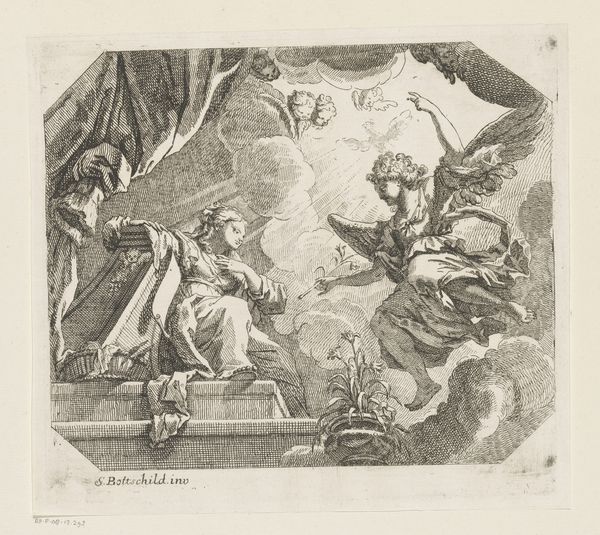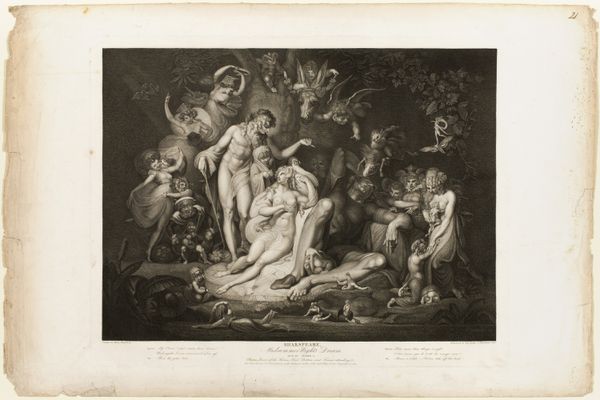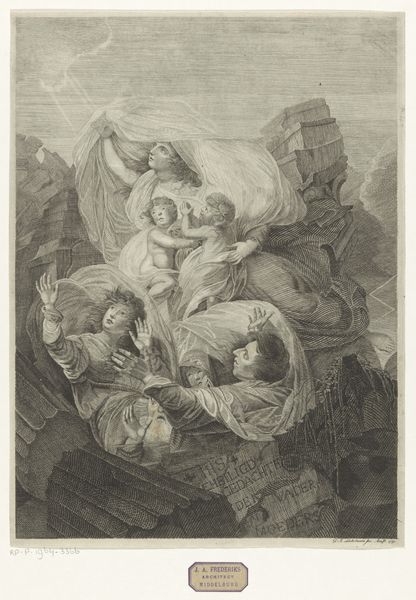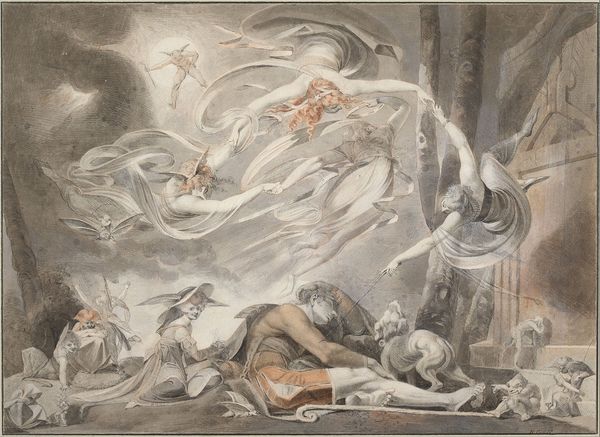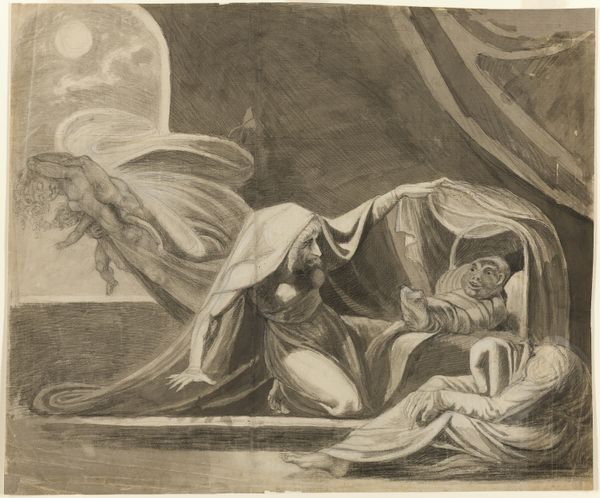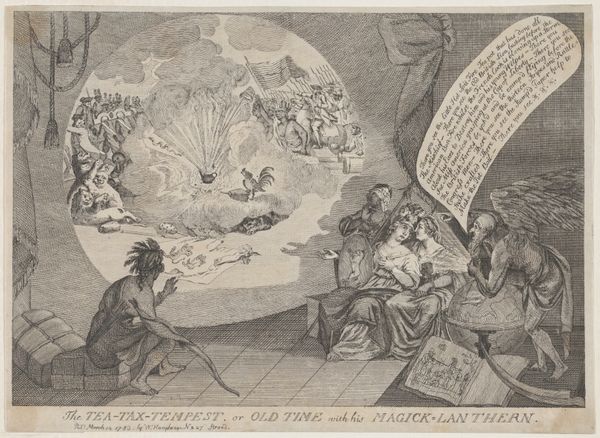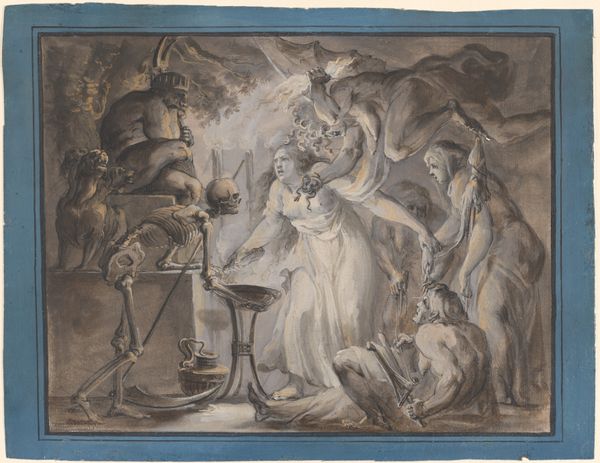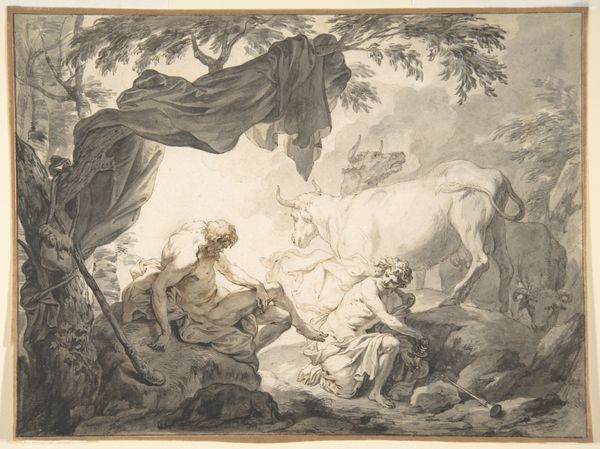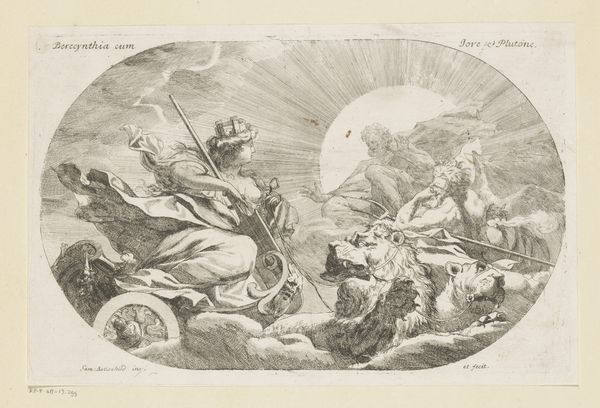
drawing, print, etching, engraving
#
drawing
#
neoclacissism
#
allegory
# print
#
etching
#
charcoal drawing
#
men
#
history-painting
#
engraving
Dimensions: Sheet (trimmed within plate): 20 1/2 × 23 3/8 in. (52.1 × 59.4 cm)
Copyright: Public Domain
Curator: Before us, we have John Dixon’s 1774 print, "The Tea-Tax-Tempest (The Oracle)," an allegorical scene rendered through engraving and etching. Editor: It's dreamy and unsettling. Like a stage set just before a storm, all heavy atmosphere and knowing glances. The color is really muted and eerie, too. I feel like I’ve wandered into someone else's complicated dream. Curator: Dixon crafts a direct commentary on the brewing conflict between Britain and its American colonies, sparked by the Tea Act. Note the two women, representing America, being consoled by Minerva, while figures representing Tyranny threaten in the background. Editor: Oh, that clarifies things a lot! The figures on the upper right make more sense now. I see a visual representation of this so called "Tyranny," all snarling teeth and chaos. It seems even the muscled guys holding spears look kinda of sinister! Curator: Absolutely. The print adopts neoclassical aesthetics to dissect deeply political subjects of revolution and oppression, viewed from the distinct Loyalist stance of the artist and period. We can examine the complex interplay between classicism and its instrumentalization in service of specific political aims, especially within colonial discourse. Editor: Right! Art and politics: thick as thieves then and now! Thinking of those allegorical ladies, that image of oppressed innocence seems like an emotional pressure point. Is this an invitation to the British audience of the time to sympathize? And feel maybe a pang of…maternal… maybe national protection over these women? Curator: Indeed. Consider the loaded symbolism and historical moment that this piece captures. As an object of Loyalist propaganda, it becomes both artifact and agent of history, influencing attitudes while being irrevocably shaped by them. Editor: You put it best, it is just history painting, political narrative and human emotions altogether! It reminds us of the power art possesses—to rally, critique, or console in pivotal times, and the importance of decoding these visual messages through today's lens.
Comments
No comments
Be the first to comment and join the conversation on the ultimate creative platform.
